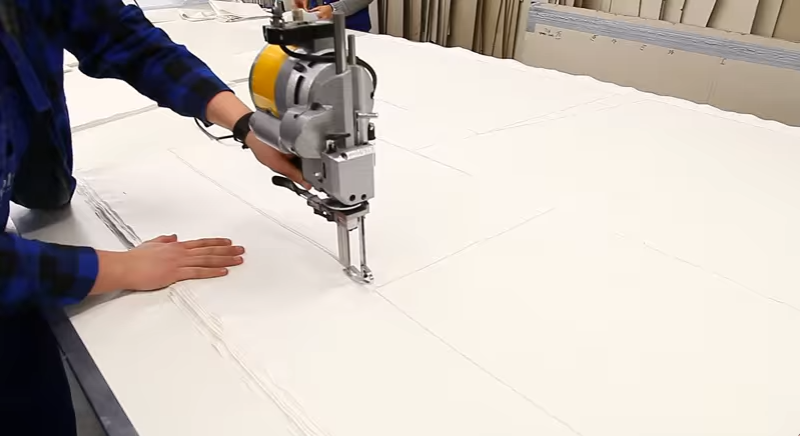Fabric Cutting in Garment Business

Fabric Cutting in Garment Business by fabriclore
The process of cutting involves removing the required parts from the fabric pattern in order to complete the garment. According to the issue plan and with the aid of graded pattern markers, the fabric is cut in order to facilitate the assembly of garments. This is the primary function of the cutting room; it is also the most crucial step since, after the fabric has been cut, there is little that can be done to fix serious flaws.
Yet, a fused edge in cutting fabric is one of the most widespread issues in the ready-made garment business. That messes up the manufacturing of clothing as a whole. So, in order to maximize production from a garment export order, it is crucial to ensure that the cutting area is free of such faults. Many approaches to infusing the cut edge of fabric are outlined in detail here.
Fabric cutting entails what, exactly?
The process of creating an article of clothing begins with the cutting stage. Also, the act of making is the bedrock of garment construction. Cutting is the process of separating a spread into pieces of fabric for a garment that is the same size and form as the pattern pieces on a marker. Before precisely cutting specified pattern forms, operators may transfer lines and notches from garment components. This is to help in sewing, chopping, or separating a spread into blocks of independent objects. This is done so that a cutting knife may be mass-produced more easily or so that cloth patterns can be matched more precisely.
The term “cutting” refers to the procedure of removing the pattern pieces from the suitable cloth once the marker has been created. Modern cutting methods range from very basic to quite complex. In many businesses, particularly those with a lower output volume, cutting is still done by hand, even though scissors are often used only for the smallest of quantities or the most delicate of textiles. Stacks of cloth are cut through using electric cutters as they are directed around the edges of pattern pieces. It is possible to use an electric drill to cut notches in a design.
As the cost of technology decreases and the cost of labor rises, computerized cutting systems are becoming more widespread. In order to hold fabric stacks in place while being cut, these computer-controlled automated cutters use suction technology. Depending on the kind of fabric being cut, the blades will be sharpened automatically. One of the most widely used cutting systems is made by Garment Technologies. While this technique is superior to other methods of cutting in terms of precision and speed, it is prohibitively costly.
Techniques for Removing the Fuss from Fabric Trimmings
- First, the height of the fabric should be reduced by decreasing the number of plies. This must be done carefully throughout the spreading process (the maximum number of plies is 300). If it goes over the set limit, the fabric may fuse together at the edge. Hence, we should be able to minimize the possibility of fused edges in the cutting cloth by reducing the ply height.
- The second most important consideration when cutting fabric is a sharp knife. Problems with the fabric-cutting process and welded edges might occur if the cutting knife is not properly sharpened.
- Third, apply a silicon lubricant on your cutting knife; this will make it easier to peel off the fused edge from the cutting cloth.
- Fourth, use anti-fusing paper to reduce the likelihood of a fused edge in the fabric. For precise fabric cuts every time, use anti-fusing paper.
- For cutting fabrics, a fast-moving cutting knife is often used. Reduce the speed of the cutting knife. Yet, it allows for the possibility of fused edges when cutting fabrics. The speed of the cutting knife has to be reduced to provide a clean cut on all textiles.
You can look for fabrics for Middle East clothing line, then Fabriclore is your solution! Here you can get exclusive and certified fabrics in bulk.





